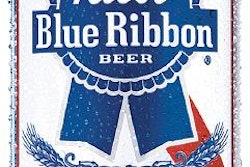At the start of last year, when a new federal law started requiring food labels to reveal the presence of eight major food allergens, the seeds of another effort were also planted. The law also required the Food and Drug Administration to work up some rules to provide for food label statements about when foods are “gluten free” to help those with celiac disease avoid the component.
The proposed rule doesn’t require food makers to use the statement, since the decision to add the statement will be voluntary. The proposed rule merely sets standards for when it can be used.
Anyone can offer comments on the proposed rule from now until April 23, 2007. FDA will consider the comments and make any changes they deem appropriate, then issue the final rule by August 2008. It would become effective at a specified time after that.
It’s estimated that as many as 3 million people suffer from celiac though only about 40,000-60,000 have been diagnosed with the disease by a doctor. The disease causes chronic inflammation of the small intestine upon eating proteins called “glutens.” The disease is genetic in origin. Gluten shows up in many cereal grains.
Like allergies, celiac disease cannot be cured as such, but sufferers avoid symptoms by avoiding ingesting glutens. FDA says many consumers have reported that having a reliable, consistent, gluten-free labeling claim on food labels “makes it easier to grocery shop, saving the consumers both time and the frustration experienced when reading often lengthy and complicated ingredients lists” they often don’t understand. Industry, too, says there is no consistency in the way “gluten-free” is interpreted and utilized, so a uniform definition and standard would help create fair competition.
This syndrome is not uncommon with label issues. Regulatory standardization of the meaning of environmental claims like “recyclable” or “biodegradable,” and food content claims like “light,” made for consistency in the way these terms were used. That cut down on false claims, too.
Right now, there is not an FDA regulation defining or governing the use of the term “gluten-free.” FDA has previously advised packagers only that a gluten-free claim could be used on a label as long as the claim was truthful and not misleading.
Then the Food Allergen Labeling and Consumer Protection Act of 2004 (FALCPA) told FDA to make a rule defining and permitting the use of the term “gluten-free” on food labels. The proposed rule was to be issued by August 2006 (whoops, it came out a little late, in January 2007), and the final rule is due by August 2008.
The essence of the proposed rule is the definitions. Under its proposed rule, FDA defines “gluten” as proteins that occur naturally in a “prohibited grain” and that may cause adverse health effects in those with celiac disease. The proposed rule defines “prohibited grain” as:
• wheat (any species of the genus Triticum);
• rye (any species of the genus Secale);
• barley (any species of the genus Hordeum); and
• crossbred hybrids of wheat, rye or barley (e.g., triticale, a wheat and rye hybrid).
FDA specifically makes clear in its proposed rule that oats are not included in the definition of prohibited grain because exclusion of oats from the diets of those with celiac disease is not supported by experts, as some with celiac disease can tolerate oats.
FDA’s proposed rule allows the voluntary use of the term “gluten-free” (or the synonyms “free of gluten,” “without gluten,” or “no gluten”) on food labeling. It defines “gluten-free” as foods that do not contain: an ingredient that is a prohibited grain; an ingredient that is derived from a prohibited grain and that has not undergone gluten-removal processing (e.g. wheat flour); an ingredient that is derived from a prohibited grain that has undergone gluten-removal processing, if the use of the ingredient results in a level of 20 parts per million or more gluten in the food; or foods that do not contain 20 ppm or more gluten.
Foods that are naturally free of gluten (other than foods made from oats) may be labeled as “gluten-free” as long as the claim is phrased to indicate that all foods of the same type are gluten-free (such as “Milk—a gluten-free food”) and the food contains less than 20 ppm gluten.
For oats, though, the proposed rule is the opposite. Oats are a hard case, since their role in triggering celiac disease is the subject of some disagreement among experts. Even though oats don’t naturally contain gluten as defined in the proposed rule, they do contain peptides that create symptoms in a small number of celiac sufferers.
Also, FDA says that while oats don’t contain gluten as defined in the proposed rule, oats are frequently commingled with gluten-containing prohibited grains during processing and handling. As a result, gluten from prohibited grains is present in a number of foods that are made with oats.
So FDA proposed a special oats rule: If your oats are gluten-free, you can label them as “gluten-free”, but you can’t imply that all oats products are gluten-free. Foods that are made from oats and labeled as “gluten free” would be misbranded if the label claims that all such foods are gluten-free or if the food contains 20 ppm or more gluten.
As noted above, this gluten labeling rule was part of the law calling for label statements about major allergens. Congress found that about 90 percent of food allergies are caused by just eight food types: milk, eggs, peanuts, tree nuts, fish, Crustacean shellfish, soybeans, and wheat. It’s that law that is responsible for the fact that more foods now bear label statements indicating the food “contains” one of the food sources of a major allergen right after or next to the ingredient list in a type size at least as big as the one for the list of ingredients.
As an alternative, you can list the major food allergen in the list of ingredients and follow it in parentheses with the name of the food source it comes from, unless the name of the ingredient is the same as the food source, or the food source appears elsewhere in the ingredient list and signifies a major food allergen.
For packaging makers and users, it is important to remember that “incidental additives” include substances that migrate into food from packaging, and the allergen labeling law covers incidental additives that contain a major food allergen.
Written and electronic comments on the proposed gluten rule can be submitted to Docket No. 2005N-0279 by April 23, 2007. FDA will also conduct a safety assessment for gluten. FDA will use scientific data and methods to estimate a “safe” level of gluten exposure. Following determination of this estimated safe level, FDA will publish a notice in the Federal Register requesting comment on the draft safety assessment and its possible use in the final rule.
Eric can be reached at [email protected], and visit his firm’s Web site at www.ericfgreenbergpc.com.























